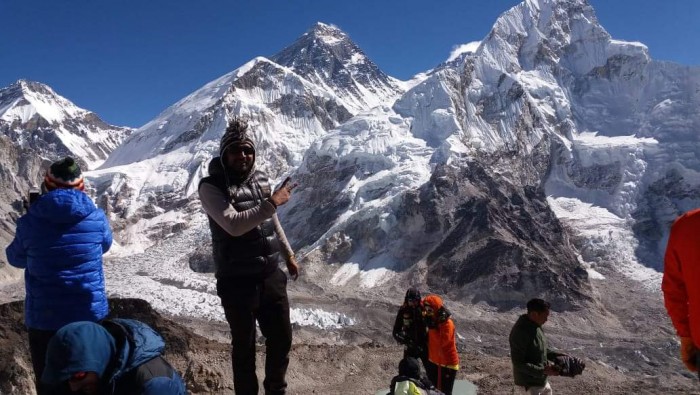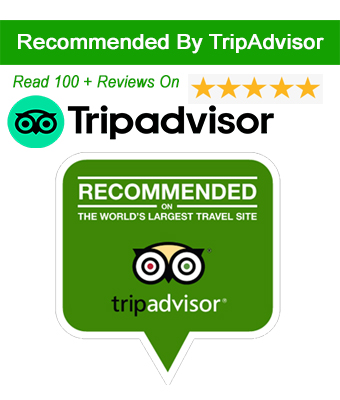The Everest Base Camp Trek (EBC) is a world-renowned adventure that attracts thousands of trekkers each year, all eager to witness the grandeur of Mount Everest—the highest peak on Earth. This once-in-a-lifetime journey offers spectacular Himalayan landscapes, cultural richness, and personal achievement. Whether you're a solo traveler or part of a group, the EBC trek is an unforgettable experience. At Himalayan Adventure International Treks, we are committed to making your journey safe, affordable, and truly memorable.
In this comprehensive guide, we'll break down the Everest Base Camp Trek cost, itineraries, permits, best time to go, and why trekking with us is the right choice.
Why Choose Everest Base Camp Trek?
The Everest Base Camp Trek is more than just a trek—it's an emotional and spiritual journey. From panoramic views of snow-clad peaks like Lhotse, Nuptse, and Ama Dablam, to interacting with the warm-hearted Sherpa people, every step is enriching. You’ll walk through lush forests, alpine landscapes, and high-altitude terrains while exploring monasteries, prayer flags, and remote Himalayan villages.
Everest Base Camp Trek Highlights:
-
Reach an altitude of 5,364 meters at Everest Base Camp
-
Explore Namche Bazaar, the Sherpa capital
-
Visit Tengboche Monastery, one of the most significant Buddhist sites in the region
-
Stunning views of Mt. Everest (8,848.86 m) from Kala Patthar (5,545 m)
-
Cross high suspension bridges and witness Khumbu Glacier and Icefall
-
Immerse in Sherpa culture and Himalayan hospitality
Everest Base Camp Trek Cost Breakdown
Understanding the total cost helps with better planning. Here's a transparent breakdown of what you may expect:
Guide and Porter Costs
Hiring a Guide
-
Cost: USD 25 to 35 per day
-
Includes food, accommodation, and insurance
-
Guides ensure safety, offer cultural insights, and manage the logistics
Hiring a Female Guide
-
Cost: USD 30 to 40 per day
-
Ideal for solo female trekkers or those preferring gender-sensitive guidance
-
All female guides are certified and experienced
Hiring a Porter-Cum-Guide
-
Cost: USD 22 to 25 per day
-
Combines basic guiding and luggage carrying
-
Includes their meals, lodge, and insurance
Hiring a Porter
Transportation Costs
Kathmandu to Lukla Flight
Kathmandu to Surke by Jeep
-
Cost: USD 300 to 400 per jeep (up to 7 people)
-
A scenic, cost-effective alternative for those avoiding flights
Food and Accommodation Costs
Meals
-
Cost: USD 7 to 10 per dish
-
Average daily food cost: USD 30 to 35
-
Prices rise with altitude due to transportation challenges
Accommodation
-
Cost: USD 5 to 10 per night (lower altitudes), USD 15 to 20 (higher elevations)
-
Basic amenities: bed, shared bathroom, blanket (no heating)
Permit Costs
Permits are mandatory and checked at various checkpoints along the route.
Equipment Rental Costs
We offer quality equipment for rent, especially helpful for trekkers traveling light:
Complimentary Services from Himalayan Adventure International Treks
We add value to your journey by providing essential complimentary services:
Group Join Everest Base Camp Trek Cost
Joining a group trek is perfect for solo travelers or budget-conscious adventurers. You share the costs and experiences while forming new friendships.
Group Join Cost: Starting from USD 1,400 per person
-
Includes permits, guide and porter fees, meals, accommodation, and basic rental gear
-
Flexible itineraries: 10, 12, 14, or 15 days
Best Time for Everest Base Camp Trek
Spring Season (March to May)
-
Clear skies and mild temperatures
-
Rhododendron blooms add color to the trails
-
Ideal for photography and wildlife spotting
Autumn Season (September to November)
Avoid Monsoon (June–August) and Winter (December–February) due to heavy rainfall and snow.
Sample Itinerary Options
12-Day Everest Base Camp Trek Itinerary
Day 1: Fly to Lukla, trek to Phakding (2,610 m)
Day 2: Trek to Namche Bazaar (3,440 m)
Day 3: Acclimatization day in Namche
Day 4: Trek to Tengboche (3,867 m)
Day 5: Trek to Dingboche (4,410 m)
Day 6: Acclimatization in Dingboche
Day 7: Trek to Lobuche (4,910 m)
Day 8: Trek to Gorak Shep (5,164 m), visit Everest Base Camp (5,364 m)
Day 9: Hike to Kala Patthar (5,545 m), descend to Pheriche
Day 10: Trek to Namche Bazaar
Day 11: Trek to Lukla
Day 12: Fly back to Kathmandu
Custom itineraries for 10, 12, or 15 days are available.
Culture and Traditions Along the Trail
The Everest region is home to the Sherpa community, known for their mountaineering skills and Buddhist traditions. You’ll pass through monasteries, chortens, prayer wheels, and mani stones.
-
Visit Tengboche Monastery, the spiritual hub of the region
-
Experience local Tibetan Buddhist rituals
-
Taste traditional Sherpa dishes and butter tea
-
Observe traditional clothing, farming, and festivals
Challenges and Preparation
While the trek doesn’t require technical climbing skills, good physical fitness is essential. Expect long hiking days, altitude challenges, and basic amenities.
Preparation Tips:
-
Train with cardio and strength exercises
-
Stay hydrated and avoid alcohol during the trek
-
Acclimatize properly with rest days
-
Pack light but adequately (layers, water purifier, headlamp, etc.)
Why Trek with Himalayan Adventure International Treks?
We go the extra mile to make your journey smooth and meaningful:
-
Experienced local guides with high-altitude expertise
-
Custom itineraries to match your pace and goals
-
Transparent pricing with no hidden costs
-
Emergency support and oxygen supply on request
-
Eco-conscious and sustainable trekking practices
-
Excellent client reviews and repeat trekkers
Book Your Everest Base Camp Trek Today
Your dream of standing at the foot of Mount Everest is within reach. Whether you're a seasoned trekker or a first-time adventurer, the Everest Base Camp Trek with Himalayan Adventure International Treks guarantees a safe, enjoyable, and soul-stirring journey.
Contact Us:
Embark on the journey of a lifetime and turn your Everest dreams into reality!
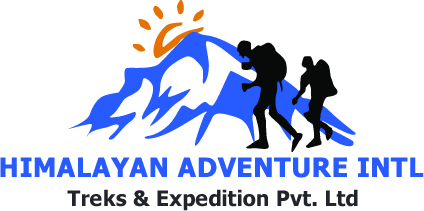
 Plan Your Trip Now
Plan Your Trip Now 
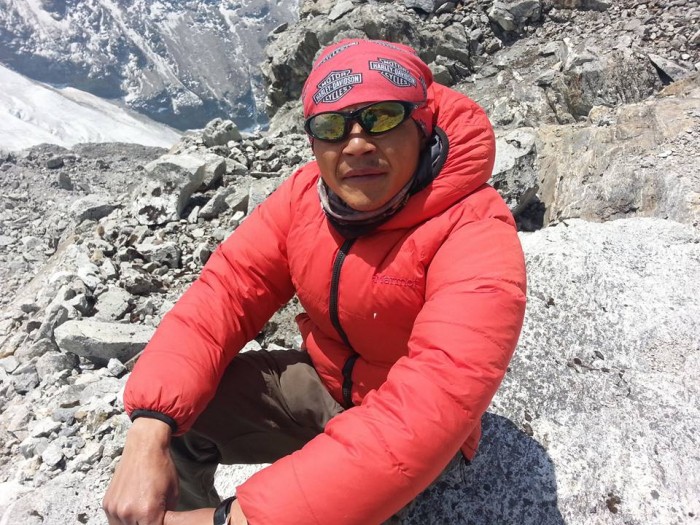

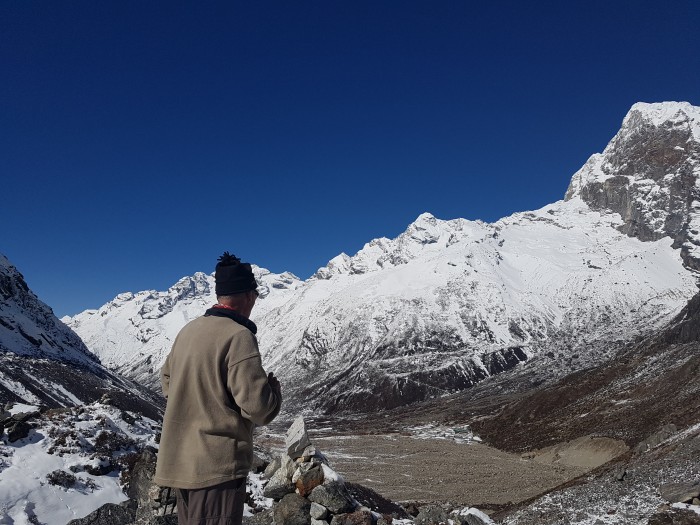







.jpg)



